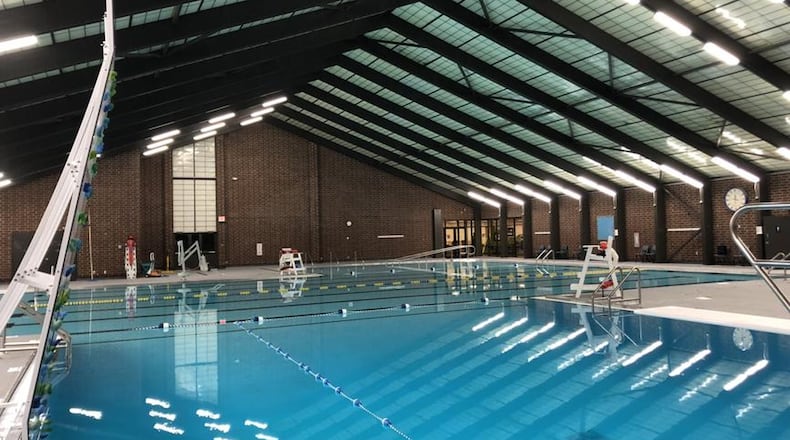But technology is aiding lifeguards by giving them extra eyes underwater, and the city of Dayton has budgeted funding to purchase underwater surveillance systems for its three indoor pools.
Dayton City Commissioner Jeffrey Mims Jr. said he thinks more families will use the city’s pools if they add technology that makes people feel more comfortable and safe.
“I think that’s something that will increase participation at the swimming pools,” he said.
MORE: Investigation released into boy’s drowning in Dayton pool; some details still unknown
Dayton's Recreation and Youth Services division has budgeted $108,000 for capital equipment and technology that includes an aquatic sensor system referred to in city documents as "Angel Eyes."
City staff at a budget work session said they want surveillance technology that notifies lifeguards when swimmers in its pools are in distress.
The city looked at a system created by a company called AngelEye, but is exploring options from other providers, staff said.
Dayton City Commissioner Matt Joseph said that kind of technology is in development in the Dayton area and encouraged staff to put out a request for information from local companies.
“There are a lot of folks working in that space here in the area,” he said.
Companies like AngelEye offer video surveillance systems that monitor pool users’ activities and alerts lifeguards when underwater objects stop moving for more than a few seconds.
Warning alarms go off when a swimmer does not make "purposeful" movement typically for between seven to 12 seconds, AngelEye says.
AngelEye’s technology sends alerts to smartwatches worn by lifeguards who can see real-time video of the submerged swimmers.
Other companies also have developed tech that monitors swimmers' activities and looks for suspicious behavior and potential emergencies. Some companies sell wearable bands that issue alerts when swimmers show signs of trouble.
The city of Dayton has indoor pools at the Greater Dayton Recreation Center, the Lohrey Recreation Center and the Northwest Recreation Center.
The city used to operate significantly more pools, but closed them down in favor of spray parks, in large part because the pool facilities were expensive to maintain and insure, city officials say.
MORE: Dayton to demolish its last outdoor pool. What happened?
Tragedy struck on July 12, 2018, when 6-year-old Niguel Hamilton drowned in the Belmont Pool at the Lohrey Recreation Center.
The boy was taking swimming classes when he went missing. He was located near the bottom of the pool in the deep end.
Hamilton was pulled from the pool by a lifeguard who performed CPR. He was transported to the hospital and put on life support, but he succumbed to his injuries on July 15, 2018.
Police who investigated the drowning said the deeper areas of the pool had some reflective glare and cloudiness.
Multiple lifeguards were in the pool area when Hamilton went missing, and lifeguards and parents told police they looked in the deep end of the pool but did not see the boy.
Last year, the city of Dayton agreed to a $1.5 million settlement with Hamilton’s estate. Lawyers representing Hamilton’s family said the city was negligent and the boy’s death was preventable.
MORE: Dayton approves $1.5M payment after boy drowns in city pool
In 2018, Hamilton was one of 21 people who drowned in Butler, Champaign, Clark, Greene, Miami, Montgomery and Warren counties, state data show.
Between 2010 and 2018, drownings took the lives of 137 people in the seven-county region.
Drowning is the leading cause of death for children between the ages of 1 and 4, and ranks among one of the leading causes of unintentional-injury-related death for people 54 and younger, according to the National Drowning Prevention Alliance.
Drownings can be a fast and silent. Sometimes, they take only 20 to 60 seconds.
About 115 people drowned in Ohio in 2018, making it the seventh-leading cause of unintentional death in the state, Ohio Department of Health data shows.
Many people who survive nearly drowning have lifelong medical problems.
The National Drowning Prevention Alliance does not endorse specific products, but it does recommend that aquatic venues use technology to try to create a safer environment and prevent drowning, said Adam Katchmarchi, the organization’s executive director.
“(We) fully support the use of ‘layers of protection’ to reduce drowning and make water safer,” Katchmarchi said. “Drowning-detection systems, such as AngelEye, add an additional layer of protection to help prevent a tragedy from happening.”
Dayton Mayor Nan Whaley said she hopes new technology would help people feel more comfortable swimming at city facilities.
“Anytime we can use technology to make places more safe, I think is a good idea,” she said.
She said the city closed many of its pools because of the cost of maintenance and insurance.
About the Author

